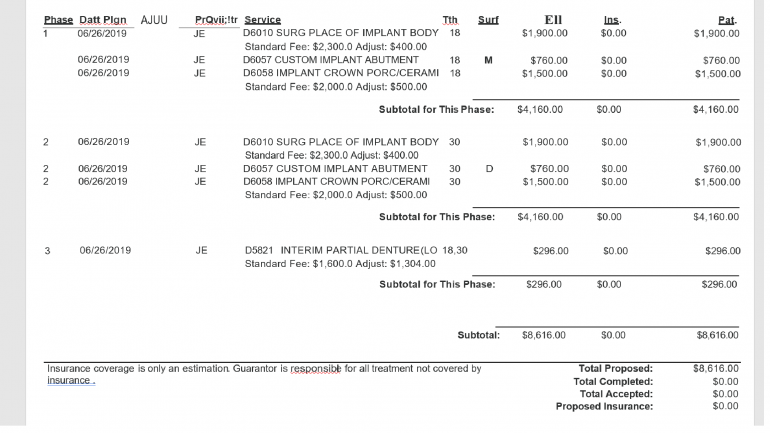
Dental Code D7280: Exposure of an unerupted tooth
Dental procedures are diverse and encompass a wide range of treatments aimed at ensuring optimal oral health. Among these procedures, dental code D7280 specifically refers to the exposure of an unerupted tooth. Understanding this dental code and its associated procedure is crucial for dental professionals and those seeking dental care.
Procedure Overview: Exposing an Unerupted Tooth
Dental code D7280, exposure of an unerupted tooth, is a procedure performed to assist in the eruption of a tooth that has failed to emerge naturally. It is typically employed when a tooth is partially or completely covered by gum tissue or bone, impeding its normal emergence. The exposure process facilitates the tooth's movement into its proper position within the dental arch, allowing for optimal function and alignment.
Comprehensive Examination and Assessment
Before proceeding with the exposure of an unerupted tooth, a comprehensive examination is conducted by a dental professional. This examination includes a detailed assessment of the patient's oral health, dental history, and radiographic evaluation. The examination helps determine the precise location of the unerupted tooth, its developmental stage, and any potential complications that may arise during the exposure process.
During this evaluation, the dentist may take X-rays or use other imaging techniques to gain a clearer understanding of the tooth's position and its relationship to surrounding structures. This information is crucial in planning the exposure procedure effectively.
Local Anesthesia Administration
Once the examination is complete, the next step involves the administration of local anesthesia. Local anesthesia is used to numb the specific area where the unerupted tooth is located. This ensures that the patient remains comfortable and pain-free throughout the procedure.
The dentist will carefully inject the anesthetic near the tooth, targeting the nerves that transmit pain signals. The anesthesia may be applied via a needle or a topical gel to minimize discomfort during the injection process. Once the area is numbed, the patient will not feel any pain or discomfort during the subsequent steps.
Soft Tissue Incision
After achieving adequate anesthesia, the dental professional makes a small incision in the gum tissue covering the unerupted tooth. This incision allows access to the tooth and aids in its exposure. The incision is carefully performed to minimize trauma to the surrounding tissues and to create an opening through which the tooth can emerge.
The incision is typically made with a scalpel or a laser, depending on the dentist's preference and the specific case. The dentist will exercise precision and caution to ensure the incision is just large enough to provide access to the unerupted tooth without causing unnecessary damage.
Removal of Obstructing Tissue or Bone
In some cases, the unerupted tooth may be obstructed by excess gum tissue or bone. To facilitate the tooth's eruption, the dental professional may need to remove or reshape these obstructing structures. This process involves a delicate and precise procedure, ensuring that the tooth can emerge unimpeded.
Using surgical instruments, such as small drills or specialized hand instruments, the dentist carefully removes any excess gum tissue or bone that is covering or blocking the unerupted tooth. This meticulous process allows the tooth to gradually move into its proper position over time.
Attachment of Orthodontic Device (If Required)
Following the exposure of the unerupted tooth, an orthodontic device may be attached to aid in its guided eruption. This device, such as a bracket or chain, is securely bonded to the exposed tooth or adjacent teeth. It provides a means of applying gentle force to encourage the tooth's movement into its proper position over time.
The orthodontic device is carefully selected and placed by the dental professional based on the specific needs of the patient. It is essential for patients to follow any instructions regarding the care and maintenance of the orthodontic device to ensure optimal results.
Follow-up and Monitoring
After the exposure procedure, the patient will undergo regular follow-up visits to monitor the progress of the exposed tooth. These visits allow the dental professional to assess the tooth's movement, make any necessary adjustments to the orthodontic device, and ensure that the tooth is correctly aligning within the dental arch.
During these follow-up appointments, the dentist may take additional X-rays or use other imaging techniques to track the tooth's progress and make any necessary modifications to the treatment plan. This monitoring phase is vital to ensure the tooth's successful eruption and alignment, as well as to address any potential complications or issues that may arise.
Summary of Dental code D7280
Dental code D7280, involving the exposure of an unerupted tooth, plays a vital role in assisting the natural eruption and alignment of teeth. The procedure comprises several key steps, including a comprehensive examination, local anesthesia administration, soft tissue incision, removal of obstructing tissue or bone, attachment of orthodontic devices if required, and regular follow-up visits. Each step is performed with precision and care to ensure optimal results and patient comfort.
By understanding dental code D7280 and its associated procedure, dental professionals can effectively address unerupted teeth, helping patients achieve healthy, functional smiles and maintain long-term oral well-being. Through this informative guide, patients can gain insight into this dental intervention, appreciating its significance in promoting optimal oral health and proper dental alignment.
Dive into a world of budget-friendly smiles with
Dr. BestPrice! Your smile deserves the best, without the hefty price tag.